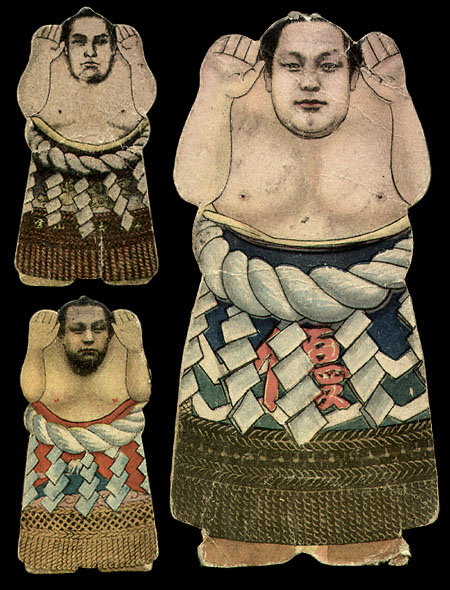Japanese card collectors in the 1970s and 1980s were bombarded with a ton of collecting options ranging from menko, bromides, and mini cards which covered a wide variety of topics like tv shows, anime, movies, singers and video games. Apart from my sumo wrestling card hobby, I love to collect cards from the 1970s and 1980s, especially if they have a theme that I am particularly interested in or can relate to. Japanese mini cards are my main focus from this era and I wanted to give a short guide to collecting these cards in the 1970s and 1980s via the 1983 Amada LSI Game Set.
Mini card production started around 1973 and ended approximately 12 years later in 1985. As irony would have it, the subject of today's review (1983 Amada LSI Game Set) was likely the reason for the demise of the mini card as Japanese kids turned their attention from card collecting to video games and electronic entertainment. But if you were a kid in 1983 and wanted to buy mini cards, you likely would go to a
Dagashiya (Candy Shop), like the picture below, to browse the selections and make your purchases.
Dagashiya have been around in Japan for decades and where you would purchase menko in the 1930s-1960s , but today when you find one they are more for tourists and nostalgia.
Once inside the shop you would be bombarded with candy, hanging bromide taba, small toys and of course mini card boxes like the one below. Most
dagashiya owners went to wholesale districts regularly to stock up on goods for the store and you see this still in Japan with the fish and meat markets scattered about in the bigger cities. In order to prepare the box for display in the store the owner would remove the prizes as well as the envelope of sealed winner card packs. See pictures below. The prizes would be kept behind the counter and the winner card envelope opened and the winner packs would be randomly distributed among the regular, non-winning packs. I'm not sure why the winner card packs were originally segregated, but likely so the owner could distribute as he/she saw fit, or because the cards were stamped separately and it was easier to package them separately.



The cover of the box, like most mini card boxes, shows what kind of cards you would be buying as well as what the odds were of getting a winner card. The 1983 Amada LSI Game set came with 60 packs (2-cards per pack)...50 packs of regular or "Loser はずれ cards" and 10 packs of winner cards. The prizes in this box are 2 Grand, 2 1st Level, 3 2nd Level and 3 3rd Level prizes. As mentioned above, the winner card packs were distributed throughout the box by the owner. It's impossible to tell from the pictures above put the Grand Prize (Gray) was a pack of 12 cards, the 1st Level Prize (Blue) was a pack of 8 cards, the 2nd Level Prize (Black) was a pack for 5 cards, and the 3rd Level Prize (Red) was a pack of 3 cards. Most often these prize packs contained more of the same of the regular cards. If you haven't caught on yet, the big push with mini cards was really all about gambling; the chance and motivation to get bigger cards and prizes. Each pack, or chance, cost 10 yen and considering in 1983 the exchange rate was about 250 yen per US dollar, each kid was buying a pack for about 4 cents....which seems comparable to what kids were paying in 1983 per card....maybe a little more. So after paying 10 yen, the kid would pick, or the owner would choose a pack, and the kid would start ripping. If a winner card was opened, the owner would cancel the card (usually with a pen or marker through the winner stamp) and give the card back to the kid along with his/her prize.
The below picture contains some single cards I have picked up over the year to give you a better idea of this set which was to highlight and showcase different handheld LCD video games from the early 1980s.....this set really seems like a big marketing ploy by the top game manufactures to get you to buy their electronics (Bandai, Tomi, Epic, Takara). I've never played any of the games in the set, but they sure do look interesting and many of the games are still available on eBay for a hefty sum. The Japanese called the early electronics LSI, an acronym for Large Scale Integration, which was the process of integrating thousands of transistors on a single silicon microchip (Thanks Wikipedia for the quick reference). Also note below is a uncancelled winner card for a 3rd Level Prize. More often than not, you see cancelled winner stamps on cards that come to auction, but occasionally you see uncancelled cards, and my guess is that these uncancelled cards were acquired on the secondary market many years after the set was originally sold and so there was no chance to claim a prize. I consider these cards "parallel cards" and collect them right along side the regular/loser cards.


I don't have the set checklisted yet, but it is on my to-do list when I come across a hoard of these next time.























